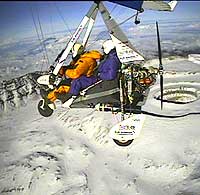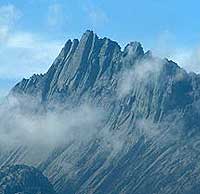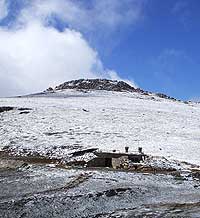RMH pilot CV
Kilimanjaro
3 Sep 2008, World records ratified31 Jan 2008, SiB news
24 Jan 2008, Post flight analysis
19 Jan 2008, Record!
22 Jan 2008, Another record
17 Jan 2008, Summit 3!
15 Jan 2008, Summit 2!
13 Jan 2008, Summit!
12 Jan 2008, Nearly ready
10 Jan 2007, Moshi
5 Jan 2008, Sausages
12 Nov 2007, Test flight
17 Dec 2007, Kit leaves
23 Aug 2007, RAF Henlow
Aconcagua
Post flight analysis15 Jan 2006, All done
6 Jan 2006, Highest tow yet
5 Jan 2006, Rivadavia
30 Dec 2005, Summit
25 Dec 2005, Feliz Navidad
15 Dec 2005, We have a convoy
17 Dec 2005, Desvio Las Lenas
14 Dec 2005, We are on our way
10 Dec 2005, The flight from hell
3 Dec 2005, Where we are going
17 Nov 2005, FIAT Wind Tunnel
1 Dec 2005, Kit is away
1 Jan 2005, 3rd place Best of ExplorersWeb 2004 Awards
24 May 2004, Summited Mt Everest
4 Feb 2005, RAeC Awards
Everest
25 Oct 2006 FAI Gold Air medal1 Dec 2005, Aconcagua expedition
4 Feb 2005, RAeC Awards
16 Dec, RAeC Britannia Trophy
1 Jan 2005, 3rd place Best of ExplorersWeb 2004 Awards
1 June, Home
22 May, Fog again
23 May, Hollywood
24 May, Full story
24 May, Summited!
21 May, Nearly
20 May, Rain
19 May, Flora
18 May, Smelly socks
16 May, Line break
17 May
15 May, A narrow escape
14 May, Fog
13 May, Camp life
12 May, Runway repairs
11 May, Yaks, Naks & Jopkyoks
10 May, Syangboche
9 May, fog
8 May, Everest in sight!
19 Apr, Pokhara
23 Apr, Oxygen
26 Apr, Lukla
5 May, Still Lukla
6 May, We have fuel!
Apr 25, Kathmandu
30 Mar, Kit despatched
6 Mar 25,280 ft
3 Mar Hypobaric test
5 Mar Guidonia
31 Jan
OBECTIVE: To fly a Microlight over the highest mountain on every continent, and YOU could be involved as co-pilot.
|
The Seven Summits are the highest mountains of each of the seven continents; Africa, Antarctica, Asia, Europe, North America, South America and Oceania / Australia. Summiting all of them is regarded as a mountaineering challenge and less than 250 people have done it since the idea arose in the mid 1980's. This challenge is to be the first to fly over all seven summits in a microlight, but there is an opportunity for you to be involved in these historic World's firsts as the co-pilot. Richard Meredith-Hardy has been flying microlights for 25 years and is one of the most experienced 'expedition' microlight pilots in the World. Amongst other notable flights, he was the first person to fly a microlight from London to Capetown in 1985/6 and in March-April 2007 flew with blind co-pilot Miles Hilton-Barber from Rhodes in Greece to Sydney, Australia . He has been World and European microlight champion and has been awarded the Royal Aero Club gold medal and the FAI Gold Air Medal. In 2004 he flew over Mt Everest as part of an expedition to tow the Italian pilot Angelo d'Arrigo in a hang glider to the summit. The following year they went together to do the same over Mt Aconcagua in Argentina, the highest mountain outside the Himalayas. By this time the idea of doing the same together over all seven summits was beginning to look possible, but before any further expeditions could be made, in March 1986 Angelo was tragically killed whilst riding as a passenger in a light aircraft. Together they had made a good team: While Angelo was particularly talented at raising the funding for these expeditions, and had become very famous in Italy as a result, Richard developed, built and tested all the specialist technical equipment necessary for such extreme flights, notably the the unique high-altitude microlight he used to tow Angelo and the various life-support and communication systems they both used. The unique high-altitude microlight which Richard had used to tow Angelo to both summits was renamed to "Espirito d'Angelo" in memory of his former partner, but with no hang-glider to tow, Richard changed the format to one of flying over more of the 7 summits with a co-pilot who has the skill to raise funds for the expedition. In January 2008 Richard went with David Barker to Tanzania to fly over Kilimanjaro. The expedition achieved all its objectives, four tandem flights were made over the summit and additionally the team returned with three UK records and two World records, one more than anticipated. For the first time, some really good quality video footage was collected from on-board cameras. The futureA partner has been found for a flight over McKinley, hopefully in September 2009. If all goes to plan this will complete the four highest peaks of the seven summits and it is hoped that at least one of the existing World Records can be improved upon. As for Elbrus, Vinson and Carstenz Pyramid, if you are interested to participate in a genuine World-first which optionally has excellent media possibilities, and you are good at raising funds, then please do not hesitate to contact Richard Meredith-Hardy to discuss the possibilities of flying together in a microlight for the first time over one of the World's highest peaks. What's involved?Statistically, flying in microlights is rather safe. Of course these flights are in potentially quite extreme conditions, but it is always the weather which is key, and usually it's just a question of waiting until it is suitable for an attempt. Pretty much all the necessary equipment has already been tried and tested on the expeditions already completed. As part of your preparation you will certainly have to visit a hypobaric chamber so you'll understand the sort of things that can go wrong at high altitude and be able to react accordingly. Otherwise you have to be pretty fit, and, depending on the expedition and budget, be prepared to camp out, sometimes in fairly hostile conditions, but we do try to make things as comfortable as possible. |
| ||||||
The seventh summitThe first Seven Summits list was established in 1985 by Richard Bass and is known as the Kosciusko list which has the highest mountain of mainland Australia as its seventh summit. Reinhold Messner, the first man to climb Everest without supplimentary oxygen, created another list known as the Carstensz list which takes on the concept of Oceania as the seventh continent and in this case New Guinea's Carstensz Pyramid is the highest summit. From a mountaineering point of view both lists are accepted equally, but Messner's list is the more challenging one. Climbing Carstensz Pyramid has the character of an expedition, whereas the ascent of Kosciuszko is an easy hike. In terms of the challenge of flying a microlight over all seven summits, both lists are equally valid, but if the Carstensz Pyramid is included, then every flight will also be the first flight by microlight over each of the seven summits. |
|
Why do it? One of the great Everest explorers, George Mallory, said:
"The first question which you will ask and which I must try to answer is this, What is the use of climbing Mount Everest? and my answer must at once be, It is no use. There is not the slightest prospect of any gain whatsoever. Oh, we may learn a little about the behaviour of the human body at high altitudes, and possibly medical men may turn our observation to some account for the purposes of aviation. But otherwise nothing will come of it. We shall not bring back a single bit of gold or silver, not a gem, nor any coal or iron. We shall not find a single foot of earth that can be planted with crops to raise food. It's no use. So, if you cannot understand that there is something in man which responds to the challenge of this mountain and goes out to meet it, that the struggle is the struggle of life itself upward and forever upward, then you won't see why we go. What we get from this adventure is just sheer joy. And joy is, after all, the end of life. We do not live to eat and make money. We eat and make money to be able to enjoy life. That is what life means and what life is for."
























